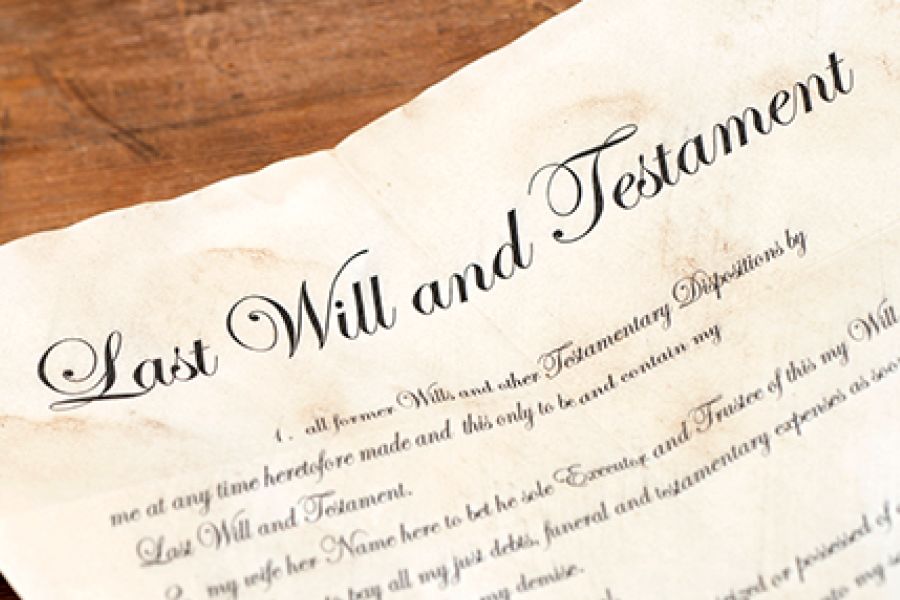The Tax Cuts and Jobs Act (TCJA) reduced individual income tax rates, but it left the 3.8% net investment income tax (NIIT) in place. It’s important to address the NIIT in your estate plan, because it can erode your earnings from interest, dividends, capital gains and other investments, leaving less for your heirs. Net Investment Income Tax: How it works The NIIT applies to individuals with modified adjusted gross income (MAGI) over $200,000. The threshold is $250,000 for joint filers and qualifying widows or widowers and $125,000 for married taxpayers filing separately. The tax is equal to 3.8% of 1) your net investment income, or 2) the amount by which your MAGI exceeds the threshold, whichever is less. Suppose, for example, that you’re married filing jointly and you...

There are good reasons why estate planning advisors recommend you revisit and, if necessary, revise your estate plan periodically: changing circumstances, including family situations and new tax laws. While it’s relatively simple to change a beneficiary, what if an irrevocable trust no longer serves your purposes? Depending on applicable state law, you may have options for how to fix a broken trust. Reasons why a trust can break A trust that works just fine when it’s established may no longer achieve its original goals if your family circumstances change. If you divorce, for example, a trust for the benefit of your spouse may no longer be desirable. If your children grow up to be financially independent, they may prefer that you leave your wealth to their children....
Traditional and Roth IRAs can be powerful estate planning tools. With a “self-directed” IRA, you may be able to amp up the benefits of these tools by enabling them to hold nontraditional investments that offer potentially greater returns. However, there are self-directed IRA pitfalls that can lead to unfavorable tax consequences. Consequently, you need to handle these vehicles with care. Estate planning benefits IRAs are designed primarily as retirement-saving tools, but if you don’t need the funds for retirement, they can provide a tax-advantaged source of wealth for your family. For example, if you name your spouse as beneficiary, your spouse can roll the funds over into his or her own IRA after you die, enabling the funds to continue growing on a tax-deferred basis. If you name...
Despite what you might think, the importance of an estate plan isn’t limited to only the rich and famous. In fact, your family is likely to benefit from a comprehensive plan that divides your wealth, protects your well-being and provides a compass for your family’s future. Dividing your wealth Estate planning is often associated with the division of your assets, and this is certainly a key component. It’s typically accomplished, for the most part, by drafting a will, which is the foundation of an estate plan. With a valid will, you determine who gets what. It can cover everything from the securities in your portfolio to personal property, such as cars, artwork or other family heirlooms. In contrast, if you die without a will — referred to as dying...
Fewer people currently are subject to transfer taxes than ever before. But gift, estate and generation-skipping transfer (GST) taxes continue to place a burden on families with significant amounts of wealth tied up in illiquid closely held businesses, including farms. Fortunately, Internal Revenue Code §6166 provides some estate tax relief, allowing the estates of family business owners to defer estate taxes and pay them in installments if certain requirements are met. §6166 benefits For families with substantial closely held business interests, an election to defer estate taxes under §6166 can help them avoid having to sell business assets to pay estate taxes. It allows an estate to pay interest only (at modest rates) for four years and then to stretch out estate tax payments over 10 years in...
Traditionally, trusts used in estate planning contain “Crummey” withdrawal powers to ensure that contributions qualify for the annual gift tax exclusion. Today, the exclusion allows you to give up to $15,000 per year ($30,000 for married couples) to any number of recipients. Now that the gift and estate tax exemption has reached an inflation-adjusted $11.4 million, fewer people have to worry about gift and estate taxes. But, for many affluent people, the annual exclusion continues to be an important estate planning strategy. Thus, Crummey trusts are still relevant. Reasons to make annual exclusion gifts Despite the record-high exemption, there are two important reasons to make annual exclusion gifts. First, if your wealth exceeds the exemption amount, an annual gifting program can reduce or even eliminate your liability for...
One of the primary goals of estate planning is to put in writing how you want your wealth distributed to loved ones after your death. But what if you’d like to use that wealth to help a family member in need while you’re still alive? A family bank affords intrafamily lending. If you’re considering making an intrafamily loan to your children or other family members, it’s worth a look at establishing a “family bank.” Loan structure is important Lending can be an effective way to provide your family financial assistance without triggering unwanted gift taxes. So long as a loan is structured in a manner similar to an arm’s-length loan between unrelated parties, it won’t be treated as a taxable gift. This means, among other things: Documenting the...
Federal estate tax liability is no longer an issue for many families, now that the gift and estate tax exemption stands at $11.4 million for 2019. But there are still affluent individuals whose estates may be subject to hefty estate tax bills. If you expect your estate to have significant estate tax liability at your death, it’s critical to include a tax apportionment clause in your will or revocable trust. That's because a poorly worded apportionment clause, or no apportionment clause can upend an estate plan. An apportionment clause specifies how the estate tax burden will be allocated among your beneficiaries. Omission of this clause, or failure to word it carefully, may result in unintended consequences. How to apportion estate taxes There are many ways to apportion estate...
You probably don’t have to be told about the need for a will. But have you taken the time for understanding the contents of a will? Do you know what provisions should be included and what’s best to leave out? The answers to those questions depend on your situation and may depend on state law. Understanding the contents of a will: basic provisions Typically, a will begins with an introductory clause, identifying yourself along with where you reside (city, state, county, etc.). It should also state that this is your official will and replaces any previous wills. After the introductory clause, a will generally explains how your debts and funeral expenses are to be paid. The provisions for repaying debt generally reflect applicable state laws. Don’t include specific...
When drafting your estate plan, you and your attorney must account for what happens to your children and your assets after you die. But your plan must also spell out your wishes for making financial and medical decisions if you’re unable to make those decisions yourself. A crucial component of this plan are two types of power of attorney (POA). ABCs of a POA A POA appoints a trusted representative to make medical or financial decisions on your behalf in the event an accident or illness renders you unconscious or mentally incapacitated. Without it, your loved ones would have to petition a court for guardianship or conservatorship, a costly process that can delay urgent decisions. Two types of Power of Attorney in action A POA is a document under...











